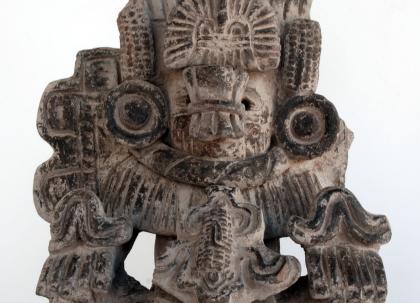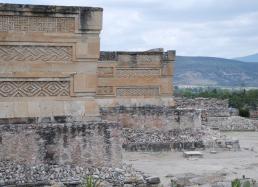10: Successful Finish
It's our last evening in Mitla for the season, and we're fortunate to have a gorgeous night with mostly clear skies, a nearly full moon, and a bit of a cool breeze. As always when the skies are clear, the surrounding mountains at the horizons are as beautiful as they are majestic.
Things are a bit greener than they were when we arrived, but not that much. Pacific storms have started up over the last month, but the Atlantic hurricane season remains quiet and so while other parts of the Valley of Oaxaca have been getting some rain, it continues to be relatively dry around Mitla.
It's a Friday night and things are busy near the Zócalo. The annual fair begins this weekend, and some rides and carnival games are already here and attracting crowds. At the same time, the school year is coming to an end, and clausuras (or the closing ceremonies) are being celebrated across town.
July 4th is Election Day this year and, as that day gets closer, the dueling campaign trucks pass through the streets repeatedly with loudspeakers blaring. Tonight, one political party has sponsored a boxing match downtown and the locals, largely men, are gathering. But it's not exactly settling to see an ambulance parked next to the ring with doors already ajar and drivers in their station!
The crew has now all scattered. We made our last trip to the airport in Oaxaca City today. Our collections from the season are safely stored and we've distributed our preliminary report to all relevant parties. Everything, including dishes, tools, bedding, books, supplies for analysis, and even some of our clothes are organized and packed in our storeroom, ready for next season. Tomorrow, we head north.
This has been a highly successful season. Besides the significantly large number of rather unexpected, but stunning artifactual discoveries, including a fabulous and almost complete ceramic urn found in association with a burial (see above photo), we've gathered a vast array of data that tends to support four key hypotheses that we formulated last year:
- The Mitla Fortress began as a town, always in a defendable location, but its more dramatic defensive role pertains to late in the site’s history, later in the Postclassic period.
- The residential occupation of the site extends into the Early Postclassic period, although defensive uses of the hill (and possibly some residential use) continued later.
- The working of various kinds of stone was important for Mitla’s economy, hundreds of years before the construction of the famous stone facades of Mitla’s Postclassic period palaces (see Photo #1 below.)
- Cloth working was a second core feature of prehispanic Mitla’s economic foundation. The people of Mitla’s long history with cloth and stone is relevant today, since weaving is one mainstay of Mitla’s current economy, while the tourists who flock to Mitla come mostly to see the prehispanic stone facades of the palaces in the archaeological zone.
Word of the Day: clausura, or “closing ceremony.”
See you next year,
Gary





